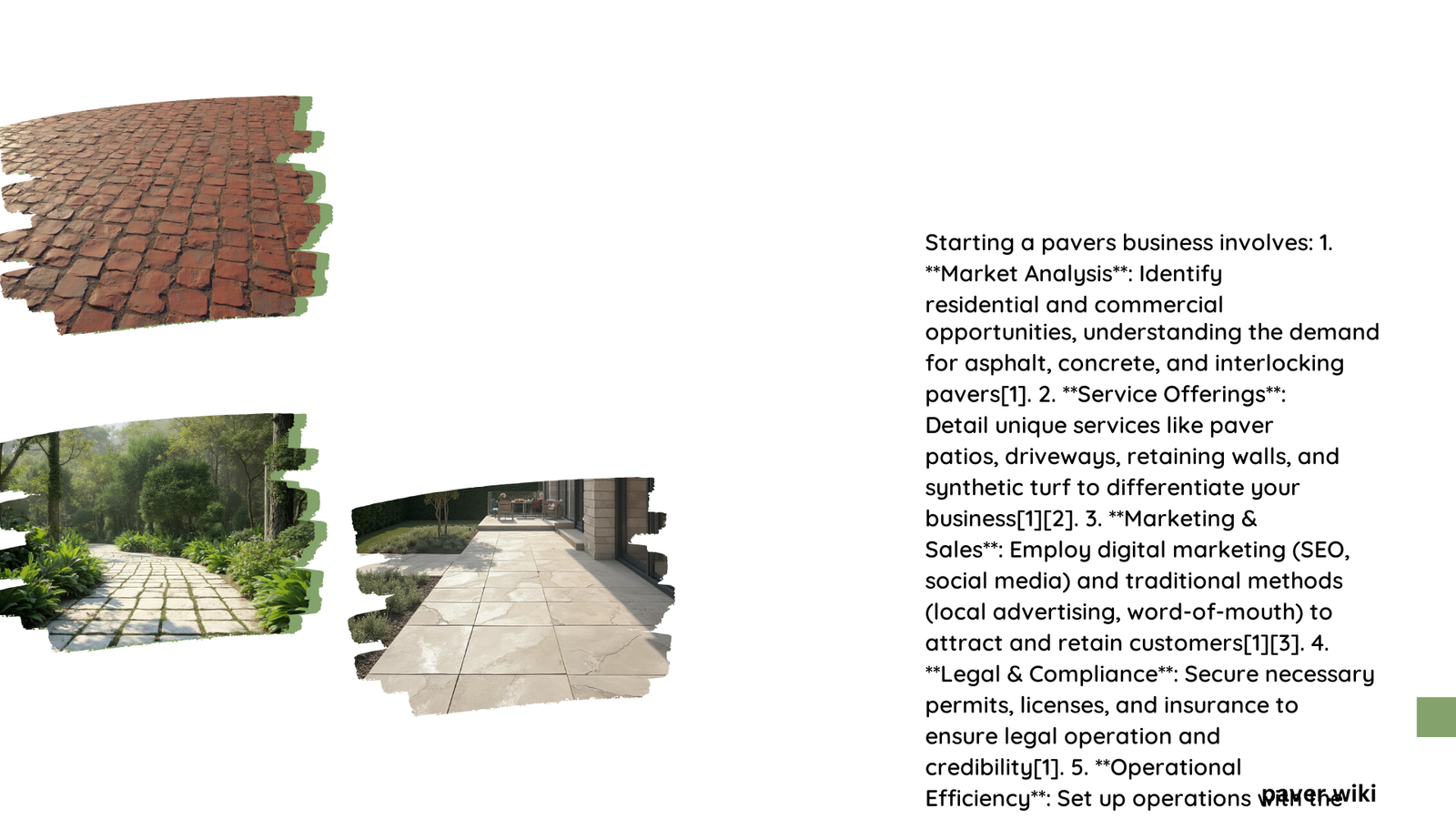The pavers business is a thriving sector within the construction industry, offering opportunities for entrepreneurs and established companies alike. With a global market value of $4.3 billion in 2023 and projected growth to $6.4 billion by 2032, the pavers business presents a lucrative venture. This industry encompasses the manufacture, sale, and installation of various types of pavers, including concrete, clay, and stone, used in residential, commercial, and infrastructure projects.
What is the Current State of the Pavers Business Market?
The pavers business market is experiencing steady growth, driven by increasing urbanization, infrastructure development, and a growing demand for aesthetically pleasing outdoor spaces. Key factors influencing the market include:
- Global market value of $4.3 billion in 2023
- Projected CAGR of 5% from 2024 to 2032
- Concrete pavers market estimated at $16,958.5 million in 2024
- Expected CAGR of 5.20% for concrete pavers from 2024 to 2031
Market Leaders and Their Strategies
The pavers equipment market is dominated by several key players:
- Caterpillar Inc.
- Volvo Construction Equipment
- Wirtgen Group
These companies collectively hold approximately 23% of the market share. Their success is attributed to:
- Focus on innovation
- Commitment to sustainability
- Continuous technological advancements
How to Start a Successful Pavers Business?

Starting a pavers business requires careful planning and execution. Here’s a step-by-step guide to help you get started:
- Market Research: Analyze local demand and competition
- Business Plan: Develop a comprehensive strategy
- Licensing and Permits: Obtain necessary legal documents
- Equipment and Supplies: Invest in quality tools and materials
- Skilled Labor: Hire experienced professionals
- Marketing: Establish a strong online and offline presence
Key Considerations for Success
- Quality Products: Offer a range of high-quality pavers
- Excellent Service: Provide professional installation and maintenance
- Competitive Pricing: Balance quality with affordability
- Customer Education: Inform clients about paver benefits and maintenance
What are the Essential Steps in Paver Installation?
Proper paver installation is crucial for longevity and customer satisfaction. Follow these steps for a successful installation:
- Site Preparation
- Clear the area
- Excavate to the required depth
-
Install edge restraints
-
Base Layer
- Add and compact a layer of gravel
-
Ensure proper slope for drainage
-
Sand Bedding
- Spread and level a layer of sand
-
Screed the sand for an even surface
-
Paver Placement
- Lay pavers in the desired pattern
-
Use spacers for consistent gaps
-
Cutting and Fitting
- Cut pavers as needed for edges and curves
-
Ensure a snug fit against edge restraints
-
Compaction and Finishing
- Compact installed pavers
- Sweep sand into joints
- Apply sealer if desired
How to Maintain Profitability in the Pavers Business?
Maintaining profitability in the pavers business requires a combination of strategic planning and operational efficiency. Consider the following tips:
- Diversify Services: Offer installation, repair, and maintenance
- Efficient Inventory Management: Optimize stock levels
- Streamline Operations: Invest in technology for project management
- Build Partnerships: Collaborate with suppliers and contractors
- Continuous Training: Keep staff updated on latest techniques
- Customer Retention: Implement loyalty programs and follow-ups
Cost Structure and Pricing Strategy
| Service | Average Cost Range (per sq ft) |
|---|---|
| Materials | $3 – $15 |
| Installation Labor | $3 – $10 |
| Base Preparation | $1 – $3 |
Factors influencing pricing:
– Material quality
– Project complexity
– Location
– Market competition
What are the Future Trends in the Pavers Business?
Stay ahead of the competition by keeping an eye on these emerging trends:
- Eco-Friendly Solutions: Permeable pavers for better water management
- Smart Pavers: Integration of technology for lighting and heating
- Custom Designs: Increased demand for unique patterns and colors
- Automated Installation: Adoption of robotic technologies
- Sustainable Materials: Use of recycled and eco-friendly components
By staying informed and adapting to these trends, your pavers business can maintain a competitive edge in the evolving market.
